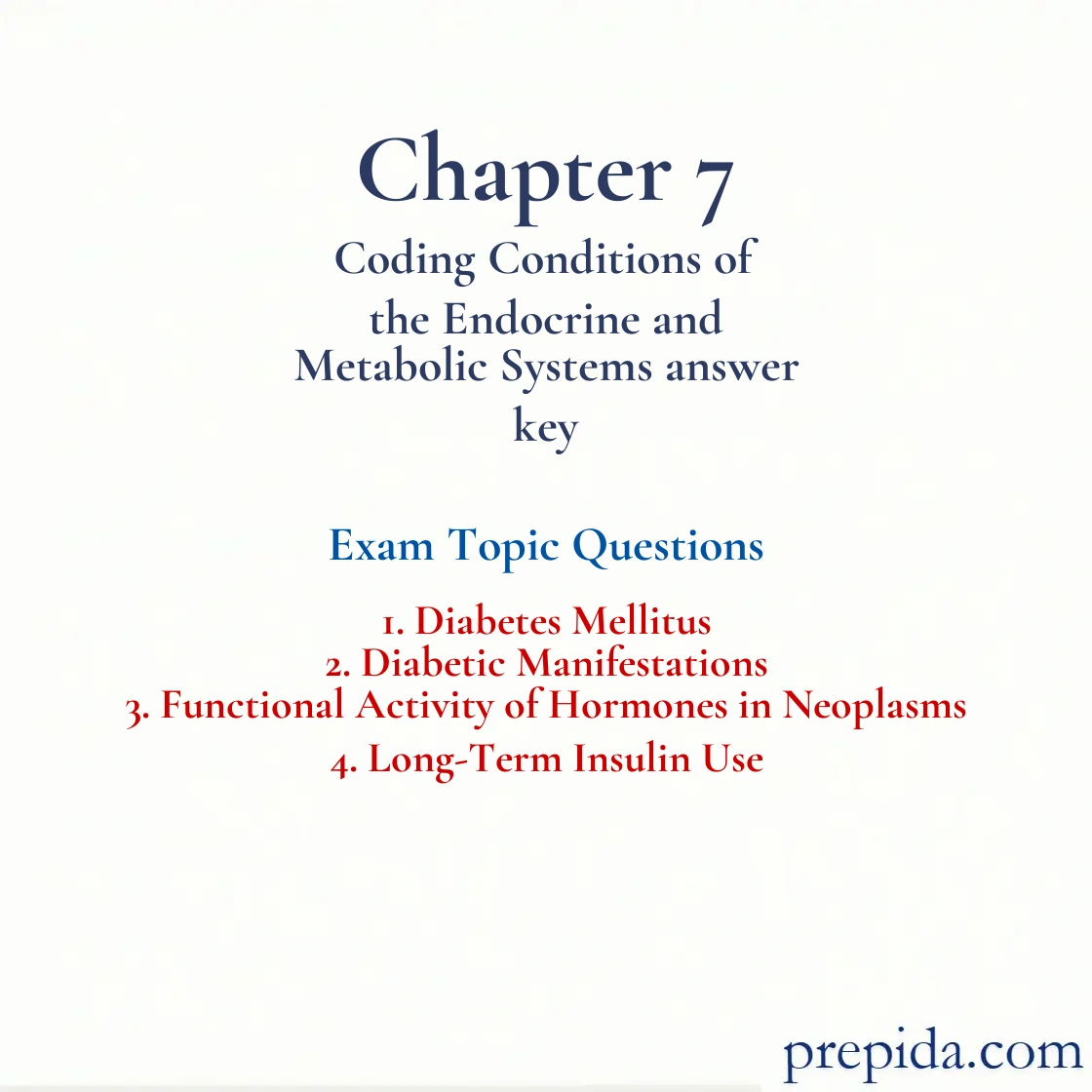
In which form of DM are the pancreatic cells affected negatively by certain drugs or chemicals?
- Type 1 DM
- Type 2 DM
- Secondary DM
- Gestational DM
In secondary DM certain drugs or chemicals can negatively affect the pancreatic beta cells and prevent them from producing the required amount of insulin.
Second Degree: Blisters on the skin; involvement of the epidermis and the dermis layers.
Which of the following is not a sign or symptom of diabetes?
- Excessive energy
- Excessive thirst
- Unusual weight loss
- Dry mouth
Excessive energy is not a sign or symptom of diabetes.
Sign: Objective evidence of a disease or condition.
The malfunction of pancreatic beta cells occurs in which form of diabetes?
- Type 1 DM
- Type 2 DM
- Secondary DM
- Gestational DM
The malfunction of the pancreatic beta cells, resulting in a lack of natural insulin production, is the underlying cause of type 1 DM.
Type 1 Diabetes Mellitus: A sudden onset of insulin deficiency. May occur at any age but most often in childhood and adolescence. Also known as insulin-dependent diabetes mellitus (IDDM), juvenile diabetes, or type I.
In which form of DM do pancreatic cells produce insulin, but glucose transport is ineffective in delivering that insulin to the rest of the body?
- Type 1 DM
- Type 2 DM
- Secondary DM
- Gestational DM
In type 2 DM the pancreatic beta cells do produce insulin, but glucose transport is ineffective, so the required amount of insulin is not delivered to the rest of the body.
Diabetes Mellitus: A chronic systemic disease that causes the body to improperly metabolize carbohydrates, proteins, and fats.
What is the correct code assigned for type 1 DM with diabetic neuralgia?
- E10.40
- E10.41
- E10.42
- E10.49
E10.42 is the correct code for type 1 DM with diabetic neuralgia. E10.42: Index>diabetes>type 1>with>neuralgia.
Sign: Objective evidence of a disease or condition.
What percentage of diabetics develops diabetic neuropathy or other kidney-related problems?
- 10 percent
- 20 percent
- 30 percent
- 40 percent
Almost 30 percent of diabetics develop diabetic neuropathy or other kidney-related problems.
What percentage of diabetics develops diabetic foot ulcers?
- 10 percent
- 20 percent
- 30 percent
- 40 percent
Almost 10 percent of diabetics develop diabetic foot ulcers.
What does the abbreviation DI stand for?
- Diabetes iatrogenic
- Diabetes insipidus
- Diabetic insulin
- Diabetic infection
The abbreviation DI stands for diabetes insipidus.
Diabetes Mellitus: A chronic systemic disease that causes the body to improperly metabolize carbohydrates, proteins, and fats.
Which of the following conditions is a disorder of water metabolism that is the result of an ADH deficiency?
- Type 1 DM
- Diabetes insipidus
- Secondary DM
- Gestational DM
Diabetes insipidus is a disorder of water metabolism that is the result of an ADH deficiency.
Diabetes Mellitus: A chronic systemic disease that causes the body to improperly metabolize carbohydrates, proteins, and fats.
What is the correct code for diabetes insipidus?
- E23.0
- E23.1
- E23.2
- E23.3
The correct code for diabetes insipidus is E23.2. E23.2: Index>diabetes>insipidus.
E Codes: Codes that report how and/or where an injury or poisoning happened.
What is/are the correct code(s) for a patient who has not been taking her insulin because she is unable to afford the medicine?
- Z91.120
- Z91.120, T38.3X6A
- T38.3X6A, Z91.120
- Z91.128
The correct code for underdosing insulin is T38.3X6A. The correct code for financial hardship is Z91.120. T38.3X6A: Drug table>insulin>underdosing>initial encounter. Z91.120: Index>noncompliance>with>medication regimen>intentional>due to financial hardship of patient. You will find the sequencing instructions under Z91.120. Code First underdosing of medication.
E Codes: Codes that report how and/or where an injury or poisoning happened.
What is the correct code assigned for alcohol-induced pseudo-Cushing's syndrome?
- E24.0
- E24.1
- E24.2
- E24.4
The correct code for alcohol-induced pseudo-Cushing’s syndrome is E24.4. E24.4: Index>pseudo-Cushing’s syndrome alcohol-induced.
Sign: Objective evidence of a disease or condition.
What is the correct code assigned for long-term use of insulin?
- Z79.0
- Z79.1
- Z79.2
- Z79.4
The correct code for long-term use of insulin is Z79.4. Z79.4: Index>long-term>insulin.